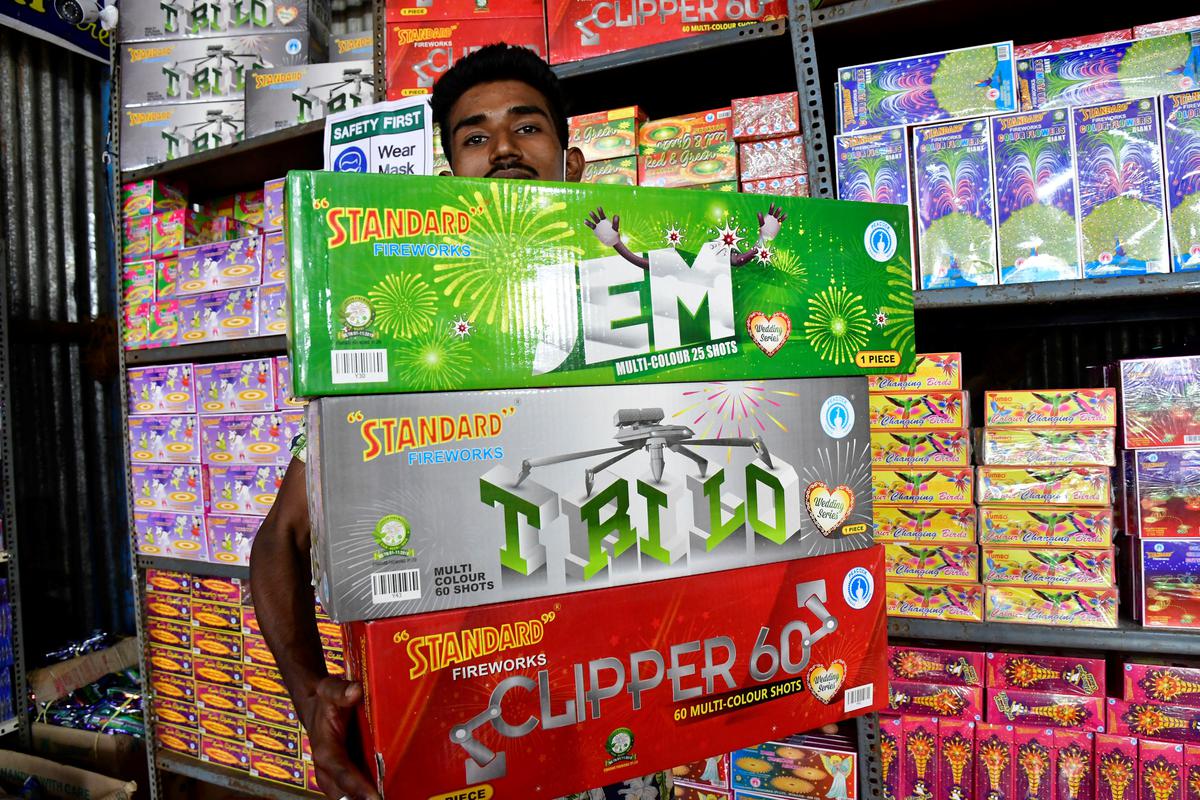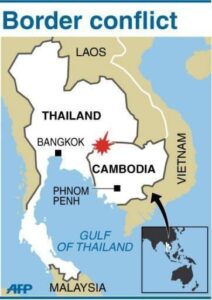🌱 1. What are Green Crackers?
Definition:
Green crackers are environmentally improved firecrackers developed by the Council of Scientific and Industrial Research – National Environmental Engineering Research Institute (CSIR–NEERI).
They are designed to reduce emissions of harmful gases, particulate matter, and noise levels.Objective:
To balance traditional festive celebrations with environmental safety and public health concerns.
⚗️ 2. Chemical Composition
| Aspect | Conventional Crackers | Green Crackers |
|---|---|---|
| Key oxidizer | Barium nitrate (toxic) | Removed |
| Substitutes used | – | Potassium nitrate, strontium salts, iron oxide, zeolite |
| Heavy metals | Aluminium, copper (cause metallic smoke) | Reduced or replaced |
| Soot & residue | High | Lower due to zeolite and controlled combustion |
Zeolite acts as an absorbent for particulate matter and toxic gases.
The controlled oxidation process reduces the formation of PM₂.₅, SO₂, and NOₓ.
🔬 3. How Do Green Crackers Work?
They use a modified combustion process with:
Lower oxidation temperature
Controlled release of energy and gases
This ensures:
30–40% reduction in emissions of PM₂.₅, SO₂, and NOₓ
Lower noise levels (within permissible limits)
Cleaner and safer smoke output
🔖 4. Variants of Green Crackers (Developed by CSIR–NEERI)
| Variant | Full Form | Key Feature |
|---|---|---|
| SWAS | Safe Water Releaser | Releases water vapor & air as dust suppressants; no potassium nitrate or sulphur |
| STAR | Safe Thermite Cracker | Uses thermite reaction with reduced metal content |
| SAFAL | Safe Minimal Aluminium | Uses less aluminium to reduce sound intensity & metallic emissions |
Each variant carries a QR code to verify authenticity and CSIR–NEERI certification.
📜 5. Legal & Regulatory Framework
Supreme Court (2018):
Allowed only green crackers to be sold and used.
Imposed time limits for bursting crackers during festivals.
Pollution Control Boards (CPCB/SPCB):
Mandated emission compliance and labelling norms.
Monitoring:
QR codes help trace manufacturers and prevent counterfeit products.
🌏 6. Environmental Significance
Air Pollution Reduction:
30–40% lower emissions of PM₂.₅, NOₓ, SO₂
Reduced smog formation post-Diwali
Noise Pollution Control:
Noise limited to 110–125 dB, as per CPCB norms
Health Benefits:
Decreased respiratory issues, especially for children and elderly
Sustainability Link:
Supports India’s Net Zero 2070 and National Clean Air Programme (NCAP) goals
Economic Balance:
Preserves livelihood of traditional fireworks manufacturers through eco-transition, rather than total ban
🇮🇳 7. India’s Global Role
India is the first and only country with a government-backed “Green Crackers” programme.
CSIR–NEERI’s model is being studied globally for sustainable pyrotechnics.
💡 8. Challenges & Limitations
Partial Pollution Reduction:
Green crackers are less polluting, not pollution-free.Implementation Gaps:
Limited public awareness
Counterfeit products without NEERI certification
Weak enforcement of sale & use restrictions
Testing & Availability:
Limited testing infrastructure for small manufacturers
✅ 9. Way Forward
Strengthen certification and QR verification mechanisms.
Promote public awareness campaigns about safe use.
Encourage research into zero-emission fireworks.
Integrate green fireworks into Make in India and sustainable industry policies.
📘 10. UPSC Relevance
| Exam Type | Possible Question |
|---|---|
| Prelims (Science & Environment) | “Green crackers” are developed by which institution? / Which of the following chemicals are absent in green crackers? |
| Mains (GS Paper 3) | Discuss the significance of green crackers in balancing cultural traditions with environmental protection. |
| Essay Paper | “Technology for Sustainable Celebrations: The Case of Green Crackers.” |
🌐 Summary in Simple Terms
Green crackers are eco-friendly versions of fireworks made by CSIR–NEERI to cut down harmful emissions and noise.
They replace toxic chemicals like barium nitrate with safer compounds, emit 30–40% less pollution, and come with QR-coded certification.
Though not completely clean, they are a significant step toward sustainable festive traditions in India.






